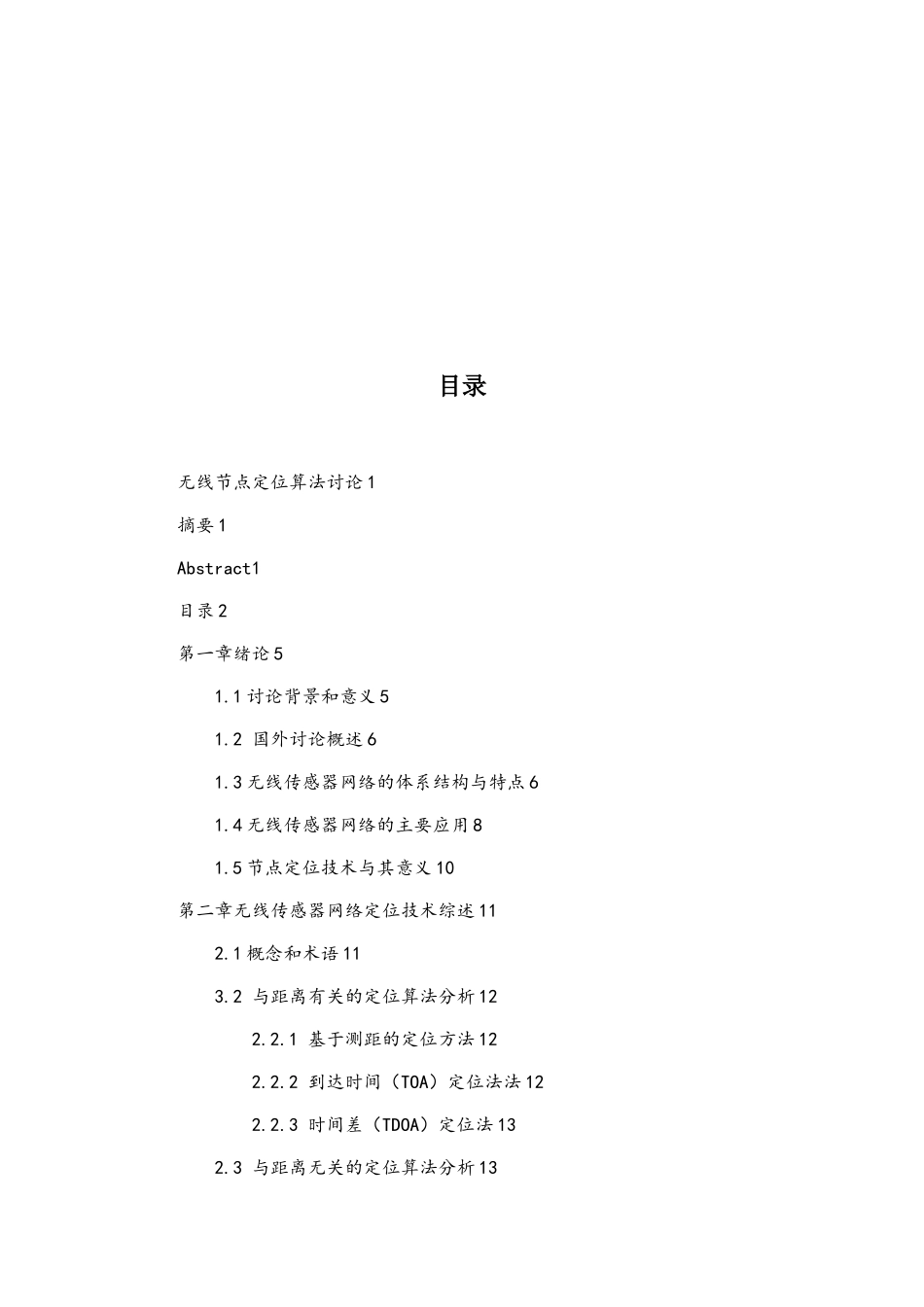无线节点定位算法讨论摘要无线传感器网络将逻辑上的信息世界与客观上的物理世界有机的联系起来,改变了人类与自然界的交互方式,实现了一种新的感知自然界的方式,被认为是能对 21 世纪产生巨大影响力的技术之一。在无线传感器网络的各种应用中,节点定位都有着十分重要的价值,然而,传感器网络规模通常比较大,给网络中所有节点均安装 GPS 收发器或者人工配置节点位置会受到成本、功耗、效率等问题的限制,因此必须采纳一定的机制实现无线传感器网络的自身定位,本文基于这一背景进行了无线传感网络中无线节点定位算法分析,主要进行了以下讨论容:首先探讨了几种经典的无线节点定位算法,然后针对 DV-Hop 算法进行了基于粒子群优化算法的改进讨论中,并给出了粒子群改进算法的技术仿真和性能分析。仿真分析表明,改进算法在精度上有了一定提高,能够满足大部分节点定位精度的需求。关键词:无线传感器;定位算法;DV-Hop 算法;粒子群优化算法Abstract Wireless sensor networks (WSNs) linking to the physical world organic logically and objectively, changing the way humans interact with the natural world, enabling a new way of perception of nature , is considered to be one of the technologies of the 21st century to make a big impact. In all these WSNs'applications, node localization is of extremeimportance.However, the scale of WSNsis usually too large ,it’s impossible to make the all node are installed GPS sender and receiver, or to configuration node location artificially, because of the limit of cost, power, and efficiency.Therefore we must use some algorithms to achieve the self-positioning of WSNs.Basing on this background,this article makes some analyses on WSNsself-positioning algorithm analysis, and focuses on the following research contents: we discusses some classic WSNs positioning algorithms. And basing on the Particle Swarm Optimization algorithm, we improve the DV-Hop algorithm and make some simulation analysesand performance analyses. Theanalyses indicate that ...


